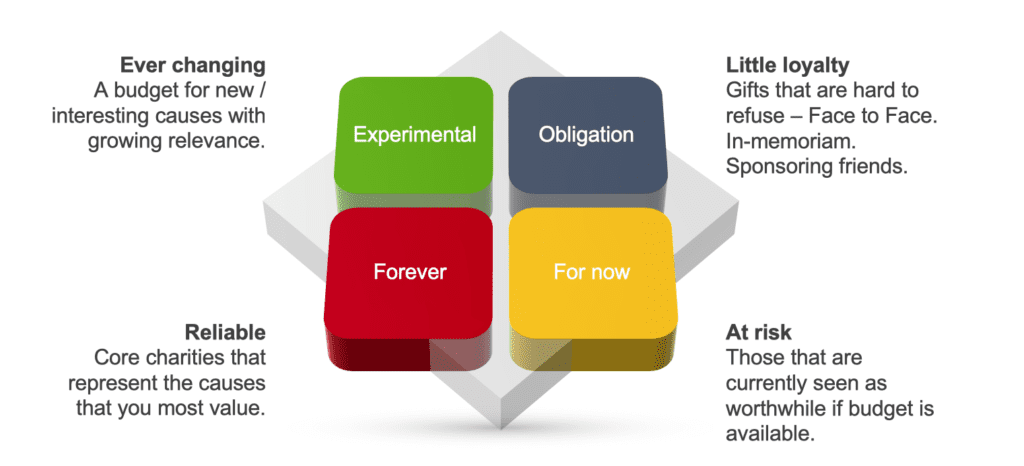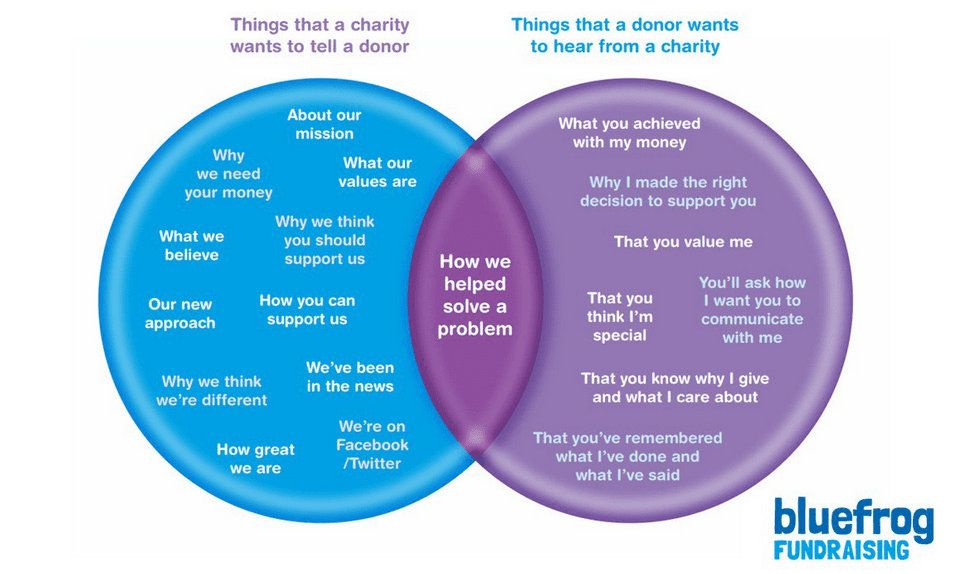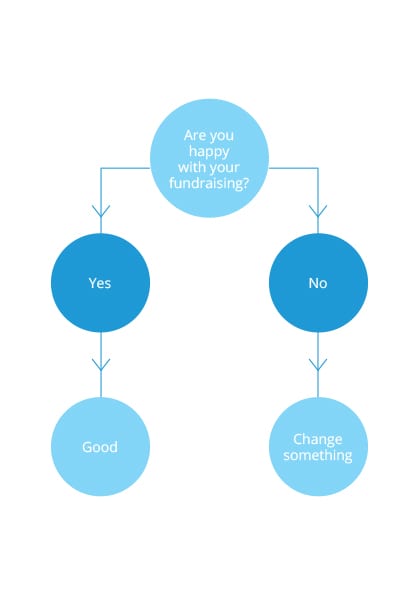How do donors manage their philanthropic budgets?
For much of the past decade, UK fundraisers have worked in a market that has struggled to grow. Latest figures actually indicate a decline in income.
Stagnation means one thing – it is impossible for all charities to raise more money. Many are actually spending more to stand still. And that should have a profound impact on our approach to fundraising.
Looking at why people give to a specific charity at a specific point in time is no longer enough. We need to dig deeper into how they decide to apportion their philanthropic budgets. How they decide which charities should get more, which should get less and which should get nothing at all.
Because when you look at donor budgets, what becomes blindingly obvious is that donors are regularly capping how much they give – either by defining a set annual sum or by limiting the number of charities they support (or both). This example from a UK donor shows how a budget works in practice.

Most gifts are planned way ahead of any appeal. And the spare money is defined as "odds and sods". I can't think of many charities who would be happy to be described as an odd or a sod!
And this donor is not alone. Interview after interview in our research programmes show that this approach is anything but rare...
"It’s pretty systematic. I have the amount, I tend to do it all at once. Keep it at a dozen."
"Depending on how the year has been, (we give) a percentage of our gross income we are comfortable with, and try to stick to that"
"We had more (charities), and we said we should stop now, it’s too spread out. We will re-assess it again I’m sure."
This highlights an uncomfortable truth. Growth for one charity comes at the expense of another. So to effectively engage with the sector's most generous and committed donors a charity may well need a case for support aimed at persuading donors to switch giving from one charity to another.
Take your charity for example. How would you break into the portfolio above? To even begin to come up with an answer you need to know how donors manage their giving.
In our studies at Bluefrog, we have found that there appears to be four broad segments to a portfolio of charities.

The Forever charities are the favourites. They represent the causes that are most important and the charities which are most valued. Donors (particularly those in the mid-level) will often allocate a slice of their budget to these charities at the start of a year.
For Now charities are seen as worthwhile as long as budget is available. These often include charities which donors support with a low level monthly gift. These charities will be the first to be reviewed if budgets come under pressure or a more attractive cause comes to the fore.
Obligation gifts are those that are hard to refuse. They are often made in response to a face to face request - either from a professional fundraiser or a friend or a colleague asking for a sponsorship or an in-memoriam gift. Loyalty here is to the friend – not the charity. Take the direct ask out of the equation and support stops flowing. Sadly, donors who are being asked for charitable gifts by families and friends are often cannibalising their philanthropic budget to cover these new financial demands.
Experimental charities are those where a donor has a growing level of interest. Donors often characterise these organisations in terms of "knowing exactly what they do with their money" or "doing something different". If things go well, these charities may move into the Forever segment.
But the key question is what influences this movement?
Whether a donor is very loyal to a group of specific charities or switches their giving across a range of organisations within a broad cause area – "So much for kids, so much for animals, so much for Cancer" – what makes the difference is how a charity makes a donor feel.
We have identified five key ways that a charity can move a donor from consideration to inclusion in a portfolio. These are:
Intelligence – allowing the donor to feel clever. This is rarely delivered by an appeal for general funds. It will very often have a specific focus on an area of work or take a different approach to solving a long-standing problem. It will demonstrate evidence of results achieved or progress towards them.
Respect – the donor receives a considered request for help from a recognised individual that takes into account their interests and their finances. They will receive follow up communications that show them what they have achieved.
Constituency – The work is directly relevant to the donor. It is something that concerns them and allows them to tackle a problem in a way that offers a direct sense of control.
Challenge – There is a defined target to what the charity wishes to achieve. It could be to complete a piece of medical research, or fund a particular project. The donor needs to see where the future will lead.
Topicality – This does not mean the problem has to be in the news. But a reason for why a gift is needed now is important. It could be an important piece of research or to prevent some form of loss.
Together these elements form the starting point for an ongoing relationship where donors have both a sense of achievement and satisfaction – essential for nudging a charity into the Forever category.
Update: I'll be talking about this in more detail at AFP Icon in San Antonio on Sunday the 31st of March at 10.45 with particular focus on mid-level US donors. I'll show techniques and examples that a range of different charities have used to dramatically increase loyalty and boost income. And as a bonus, we've been filming donor interviews in recent months so come along and see exactly what a couple of American mid-level donors have to say about charities and the appeals they receive. More details are here.
Tags In
Related Posts
2 Comments
Comments are closed.
The Essentials

Crack the Code to Regular Giving: Insights, Strategies, and a Special Giveaway!

‘Tis Halloween. Keep to the light and beware the Four Fundraisers of the Apocalypse!

Why do people give? The Donor Participation Project with Louis Diez.

A guide to fundraising on the back of a postcard

What does the latest research tell us about the state of fundraising?










[…] they tend to weed out the charities they don’t value from their philanthropic portfolios (you can read more about that here). And those choices are not necessarily based on an appreciation of which charities have been […]
[…] There’s more on how donors manage their portfolios here. […]